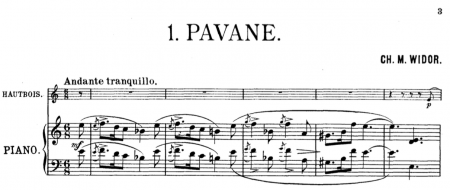I’ve had two conversations with people who play for ceilidhs which have made me think that there’s much more in common between dance calling and teaching a ballet class than we’d like to think. And now I’ve found a website which has convinced me even further.
The first conversation was with a fiddle player some years ago who explained in two sentences the relationship between marches and single jigs (you can replace one with the other) and how double jigs can be replaced with another dance (can’t remember which one now). The second was with someone recently who was explaining that they were going to do their first gig as a caller rather than just a player. When he gave an example of what he was going to do, I thought “hold on, this sounds just like someone teaching ballet, except with different steps.” It wouldn’t have occurred to me, had I not just transcribed a bit of a ballet class, and seen on paper what teachers say when they mark exercises. Ballet teachers often do what Christopher Hampson calls “giving subtitles”—calling out reminders over the music of what the next step or movement is, as the exercise progresses.
The assumption that there’s something particularly fancy about ballet blinds us to the similarities between a barn dance and a ballet class, which is what endears me to sociologists rather than musicologists. In Knowledgeable Women (1989), Sarah Delamont says (following Everett Hughes and others) “[t]he sociologist who fails to make principled comparisons across a wide range of occupations falls into the trap of giving ‘the professions’ exactly that exalted, separate, privileged, ‘sacred’ status which the sociologist should be subjecting to critical scrutiny” (Delamont 1989, p. 208).
As a result, I think we often make far too much of a palaver out of what music for ballet class involves, because we (by which I mean “the ballet world”) would like to think it’s more classy and distinguished than it really is: elegant smoke and mirrors (literally, in the case of the ballet studio). We worry about whether this piece of music or that will have the right feel and atmosphere for that exercise, but if you look at fiddle books like Kerr’s Merry Melodies, you can see immediately that for a polka, for example, you can use all kinds of music, as long as you can still polka to it – and as the fiddler pointed out, single jigs and marches are interchangeable. Whether the music’s called a galop, hornpipe, reel or whatever is neither here nor there, it’s how it goes that matters; and if nothing else, people don’t always give their tunes correct names (classical ones are the worst at that – like Widor’s so-called Pavane in 6/8).

And then I came across this, a “Caller’s Workshop” on the website of Colin Hume, a caller himself. There, on a page, is about the best introduction I’ve seen to dealing with music in a ballet class – all you have to do is imagine he’s talking about ballet rather folk dance calling. It’s concise, it’s clear, it’s down to earth. He deals with Working With Live Music music in a few paragraphs, without making a (excuse the pun) song and dance about it:
So that’s one thing to discuss with the band beforehand: who counts? The other is signals. “One more time”, so they can go back to the original tune or just give it everything they’ve got. “Out” — particularly in a patter square where you’re jabbering away. “Kill”. “Slower”. “Faster”. You think it’s obvious what you mean; they don’t have a clue. Walt Tingle uses a circular movement of the hand to mean “Wind it up — finish”, but many callers use that to mean “Faster”. Make sure you know who to give signals to — it might not be the obvious person. I tend to give signals to the whole band, for safety.
I reckon if ballet teaching manuals were written in this style, no-one would get in such a flap over it. It’s only music, it’s only dancing, but we’d all like to think that it’s something more, something that transcends the everyday. For sure, ballet at it’s best is extraordinary and out of this world, but when it comes to class, “You think it’s obvious what you mean; they don’t have a clue” is what it boils down to (on both sides, in fact).


Jonathan – spot on. I love your posts! As an example of what you’re saying about polkas, the current ISTD grade 1 syllabus includes a set polka exercise with a choice of music including a polka, a calypso, a scottische and a rag. Most student teachers choose the calypso!